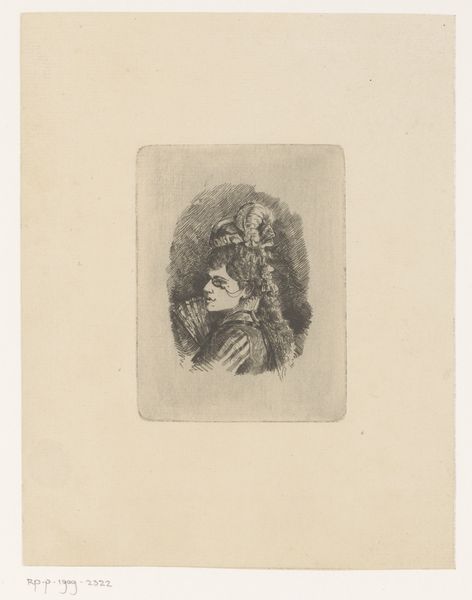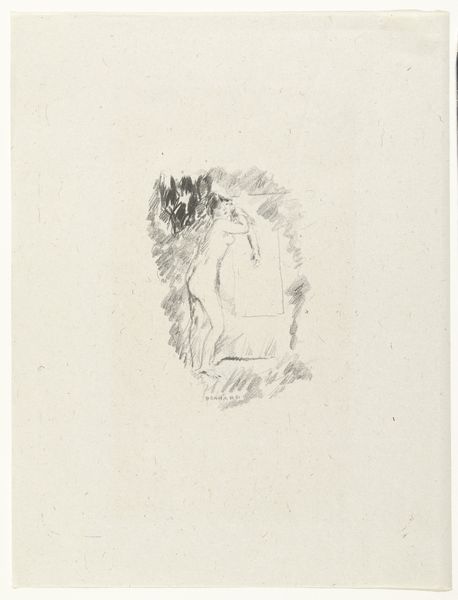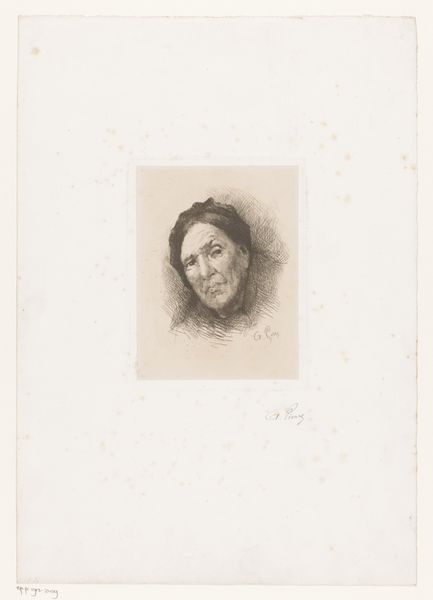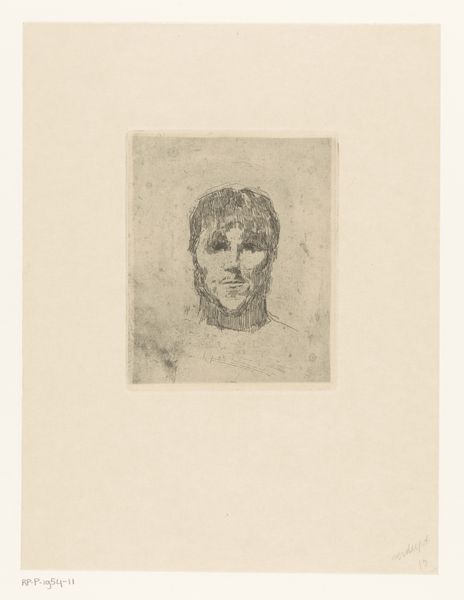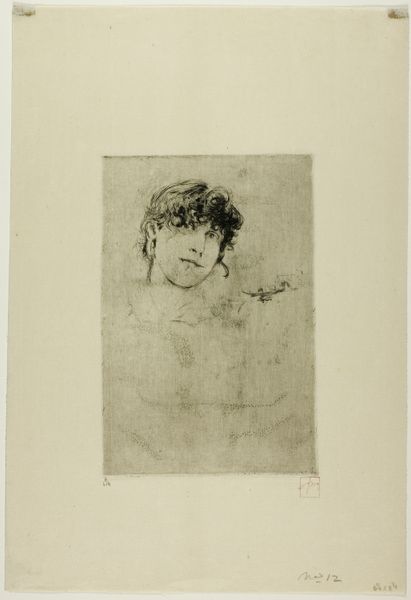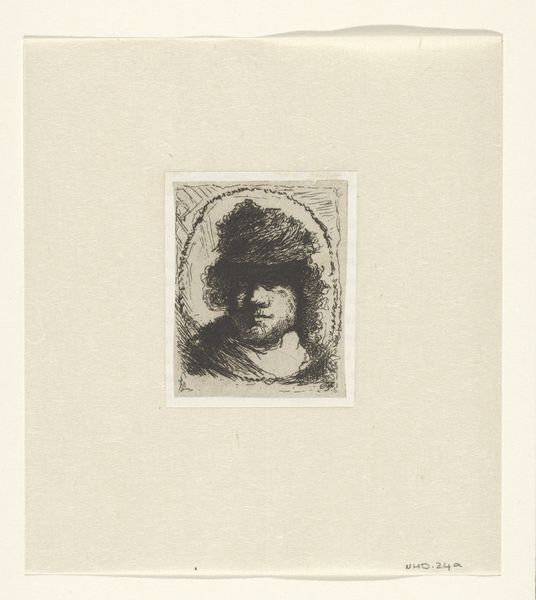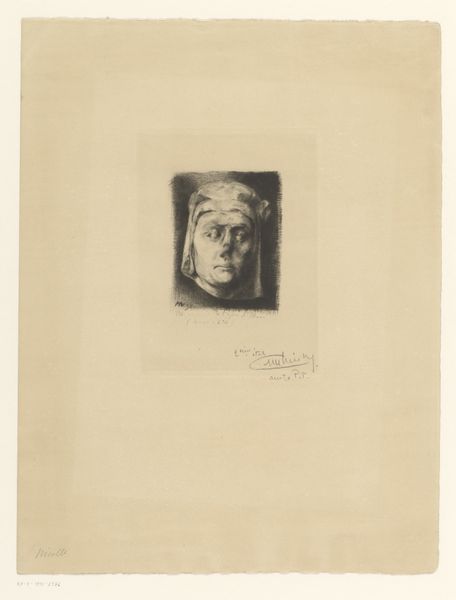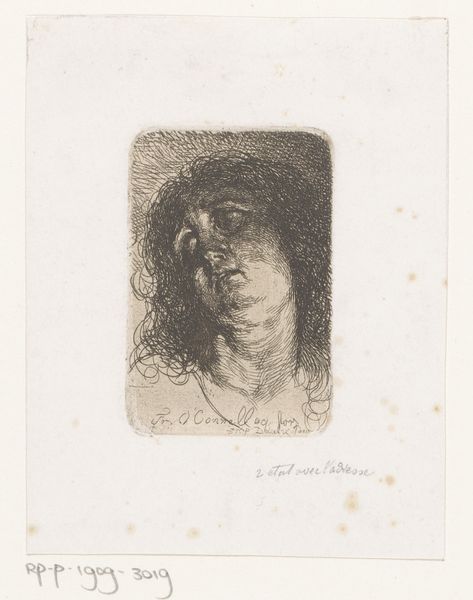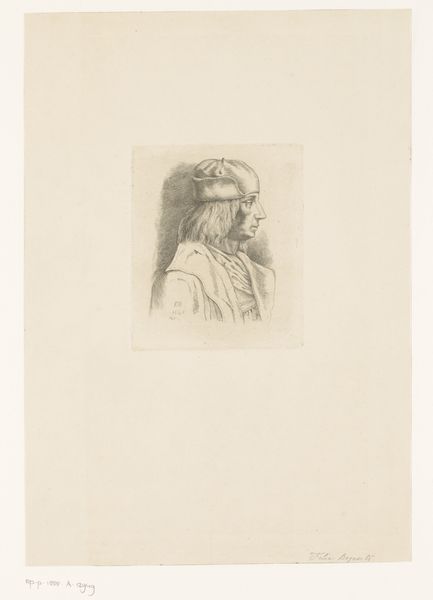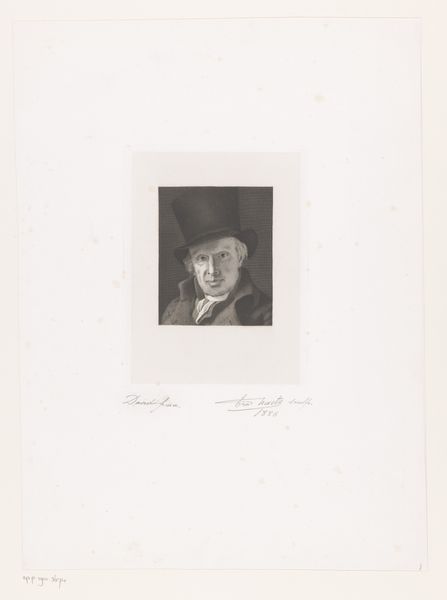
print, etching
#
portrait
#
art-nouveau
# print
#
etching
#
pencil drawing
#
realism
Dimensions: height 393 mm, width 283 mm
Copyright: Rijks Museum: Open Domain
Editor: Here we have Ferdinand Schmutzer’s "Portret van Josef Kainz," created in 1917. It's an etching, a print, and there’s something incredibly intense about the gaze. It feels very direct, almost confrontational. What stands out to you most when you look at this piece? Curator: What immediately strikes me is the intersection of artistic representation and social context. This was created during a turbulent time. How might the anxieties of World War I have seeped into the artist’s portrayal and Kainz’s persona? The way the etching captures light and shadow—almost a chiaroscuro effect— amplifies the emotional weight. Editor: So you're saying the darkness isn't just artistic choice, it's reflecting something bigger? Curator: Precisely. Consider the subject. Kainz was a prominent actor. Actors inhabit roles, explore identities. This portrait seems to capture not just his likeness but perhaps a sense of internal conflict, of the burdens he carried both on and off stage. What narratives do you think Schmutzer might be trying to convey about masculinity, identity, or perhaps the state of Austria during wartime? Editor: It’s like the weight of the world is etched into his face. I hadn't really thought about it in terms of larger social forces acting upon him. Curator: Art is rarely created in a vacuum. Exploring the historical and social context can unlock deeper understanding. By looking at the gendered portrayal of Josef and by looking at the historical time in which it was drawn we may view how class or masculinity may be affected by the state of war. Editor: This makes me see so much more than just a portrait. Thanks! Curator: My pleasure, viewing art with a critical perspective illuminates a whole world of understanding about art, politics, society and culture.
Comments
No comments
Be the first to comment and join the conversation on the ultimate creative platform.
